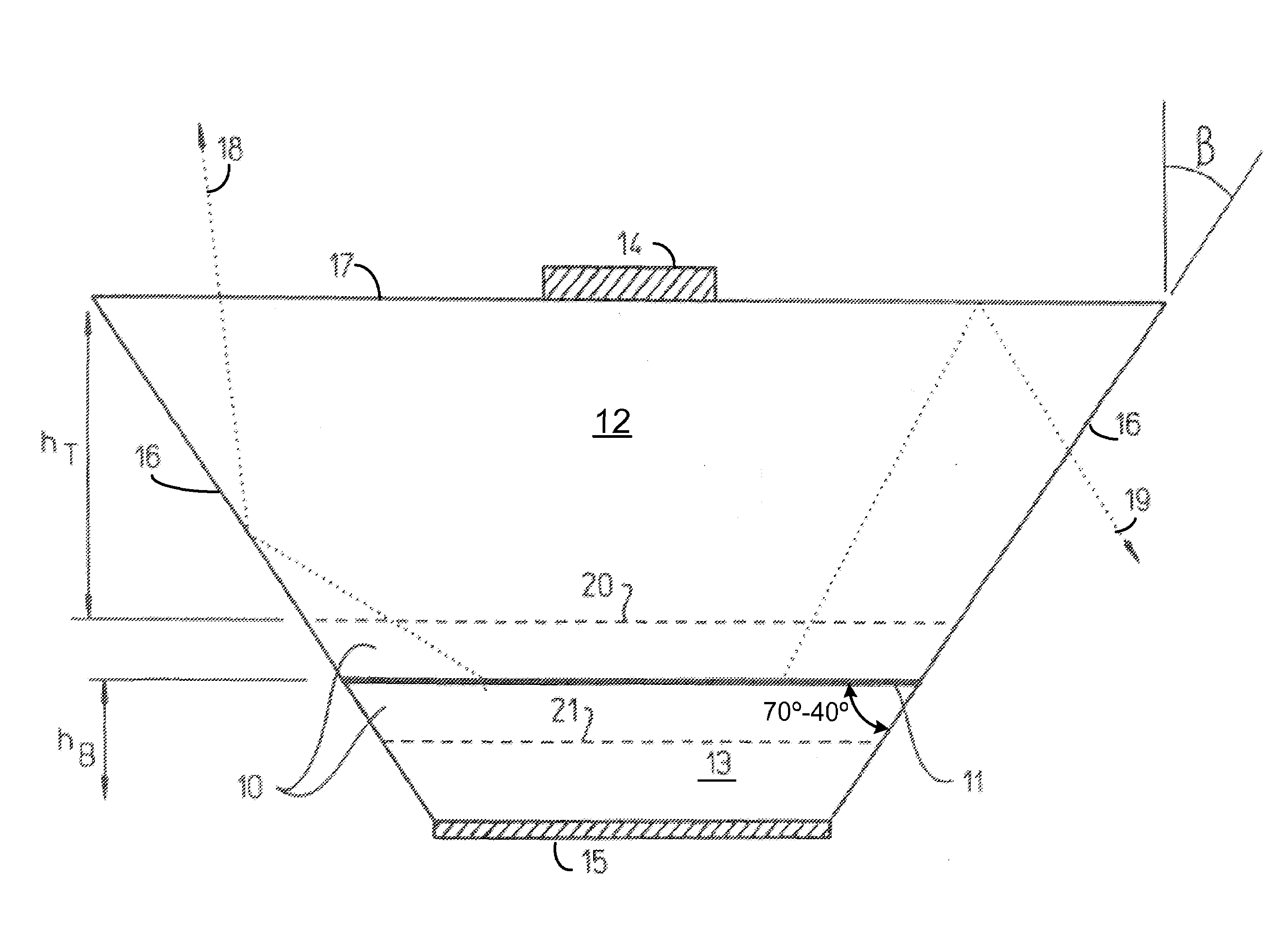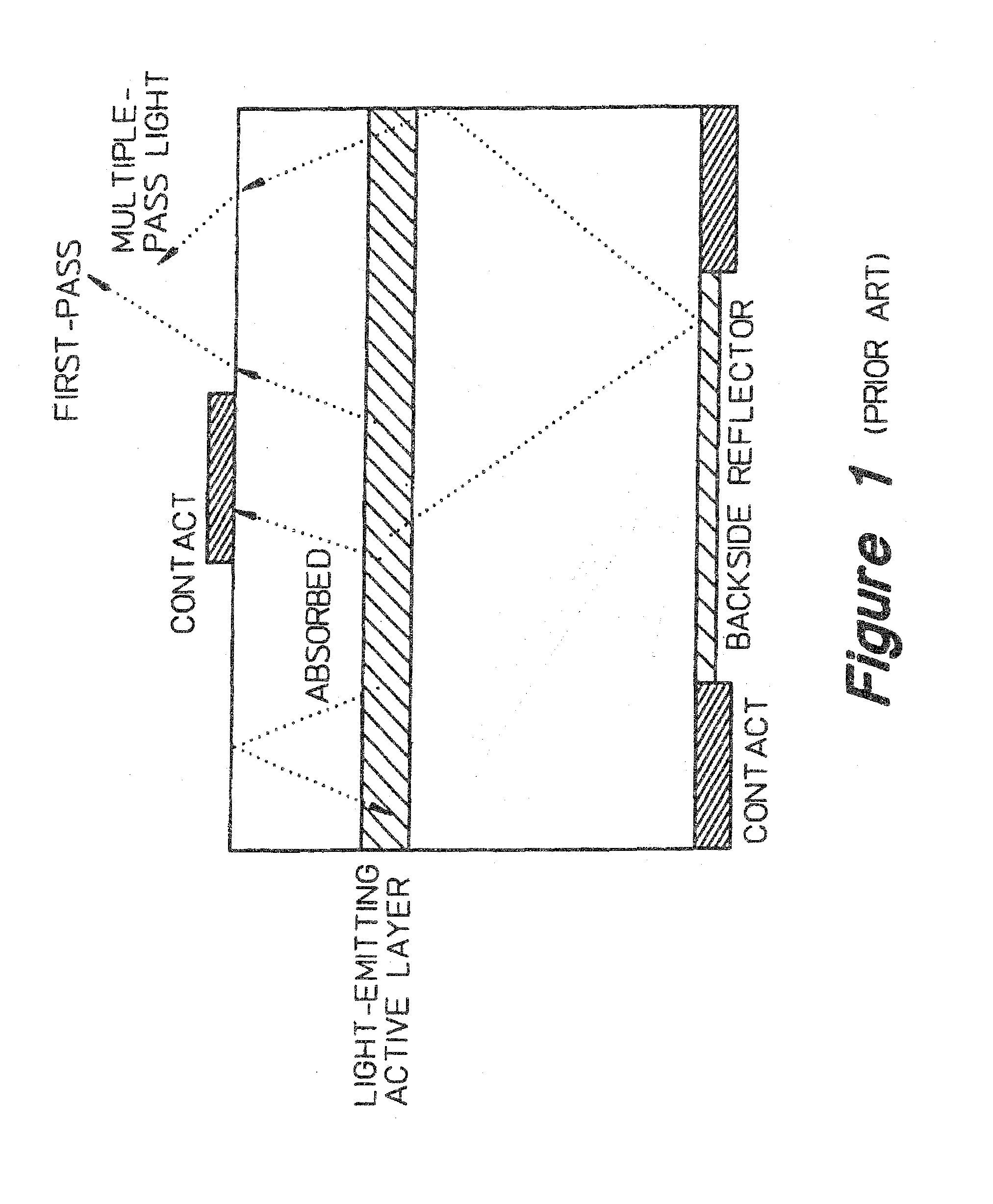Light extraction from a semiconductor light emitting device via chip shaping
a light-emitting device and semiconductor technology, applied in semiconductor devices, basic electric elements, electrical equipment, etc., can solve the problems of low internal quantum efficiency emission layer, low light extraction efficiency, and many optical loss mechanisms in commercial leds, and achieve low loss optical extraction, high injection efficiency, and increased total light extraction
- Summary
- Abstract
- Description
- Claims
- Application Information
AI Technical Summary
Benefits of technology
Problems solved by technology
Method used
Image
Examples
Embodiment Construction
[0047]A side-view of a preferred embodiment of a semiconductor light-emitting device (LED) is shown in FIG. 2. The LED includes a heterostructure comprising a plurality of p- and n-type doped epitaxial layers 10 grown on a substrate, e.g. GaAs, GaP, or sapphire. The p- and n-type layers are arranged to provide a p-n junction region in or near an active region 11. The resulting heterojunction provides for high injection efficiency at room temperature and is essential for devices in high-power applications. The area extent of the p-n junction region defines the active device area. For high-flux applications, the active device area is preferably greater than 150 mil2.
[0048]The growth substrate may optionally be removed and replaced via wafer-bonding, e.g. Kish in U.S. Pat. No. 5,376,580, issued Dec. 27, 1994, or regrown to provide a new substrate with favored characteristics. This is desirable when the growth substrate absorbs the wavelength of light emitted from the active region. In ...
PUM
 Login to View More
Login to View More Abstract
Description
Claims
Application Information
 Login to View More
Login to View More - R&D
- Intellectual Property
- Life Sciences
- Materials
- Tech Scout
- Unparalleled Data Quality
- Higher Quality Content
- 60% Fewer Hallucinations
Browse by: Latest US Patents, China's latest patents, Technical Efficacy Thesaurus, Application Domain, Technology Topic, Popular Technical Reports.
© 2025 PatSnap. All rights reserved.Legal|Privacy policy|Modern Slavery Act Transparency Statement|Sitemap|About US| Contact US: help@patsnap.com



